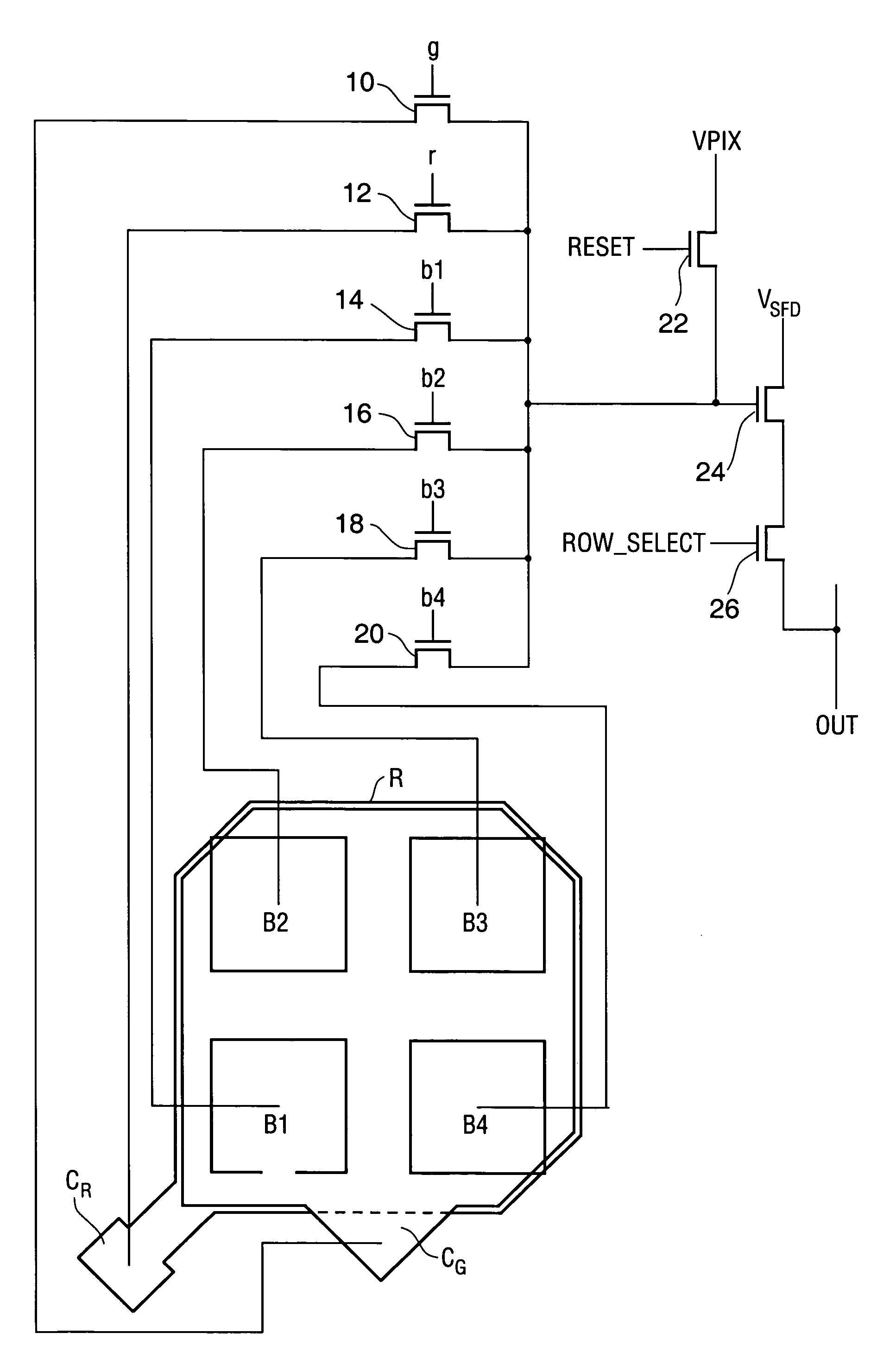Vertical color filter sensor group array with full-resolution top layer and lower-resolution lower layer
- Summary
- Abstract
- Description
- Claims
- Application Information
AI Technical Summary
Benefits of technology
Problems solved by technology
Method used
Image
Examples
Embodiment Construction
[0043]Persons of ordinary skill in the art will realize that the following description of the present invention is illustrative only and not in any way limiting. Other embodiments of the invention will readily suggest themselves to such skilled persons having the benefit of this disclosure.
[0044]Each sensor of a VCF sensor group senses photons by directly or indirectly converting their energy into electron-hole pairs. This conversion occurs in semiconducting material. A VCF sensor group is typically implemented so that the output of each sensor in the group is indicative of incident photon intensity in a different wavelength band. The radiation that reaches each sensor in a VCF sensor group has a different wavelength-intensity spectrum due to the filtering action of the material forming the sensor group. Thus, all sensors in a VCF sensor group can be identical and each sensor can still produce an output that is indicative of a different wavelength band. In some embodiments, however,...
PUM
 Login to View More
Login to View More Abstract
Description
Claims
Application Information
 Login to View More
Login to View More - R&D
- Intellectual Property
- Life Sciences
- Materials
- Tech Scout
- Unparalleled Data Quality
- Higher Quality Content
- 60% Fewer Hallucinations
Browse by: Latest US Patents, China's latest patents, Technical Efficacy Thesaurus, Application Domain, Technology Topic, Popular Technical Reports.
© 2025 PatSnap. All rights reserved.Legal|Privacy policy|Modern Slavery Act Transparency Statement|Sitemap|About US| Contact US: help@patsnap.com



